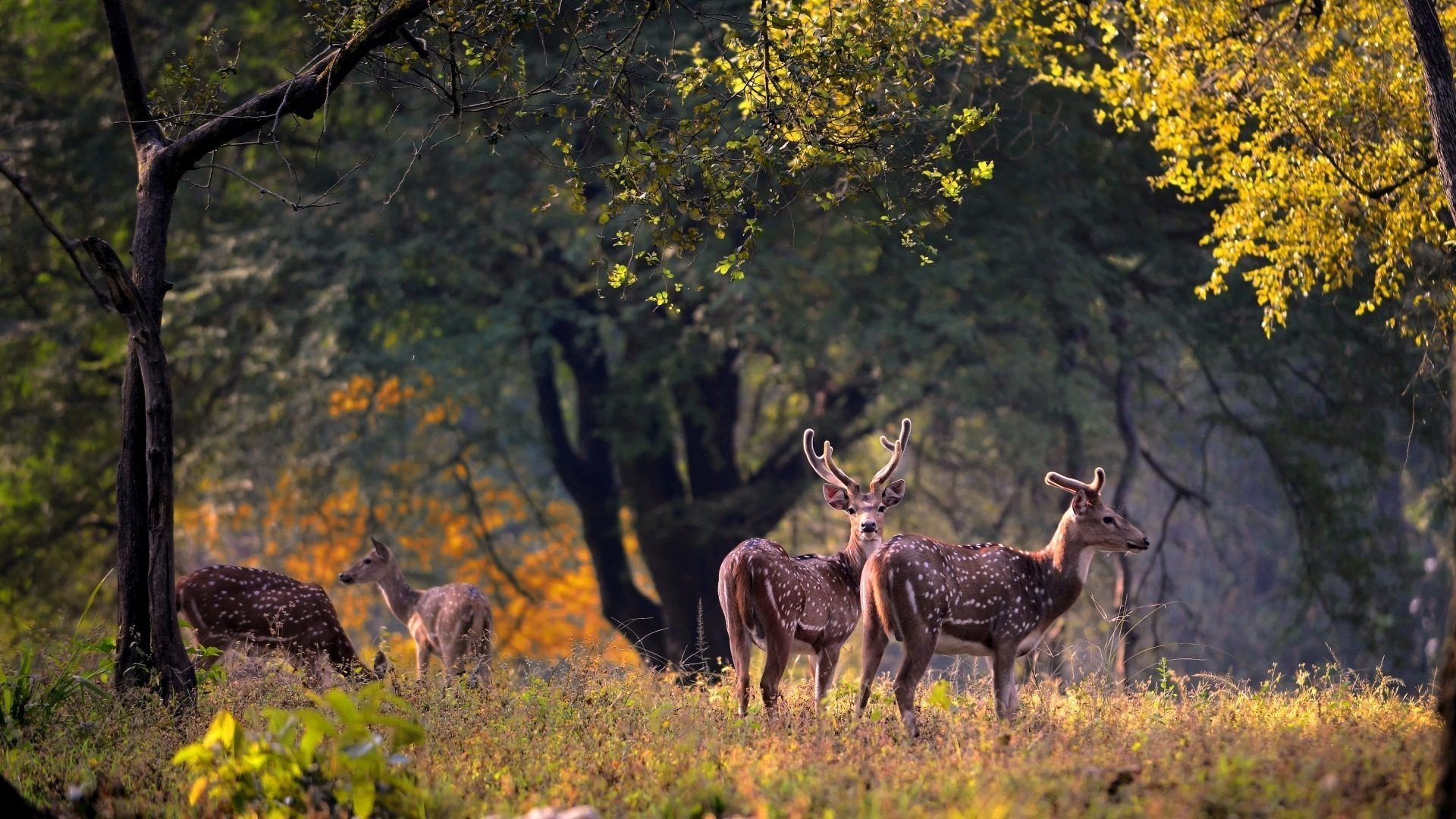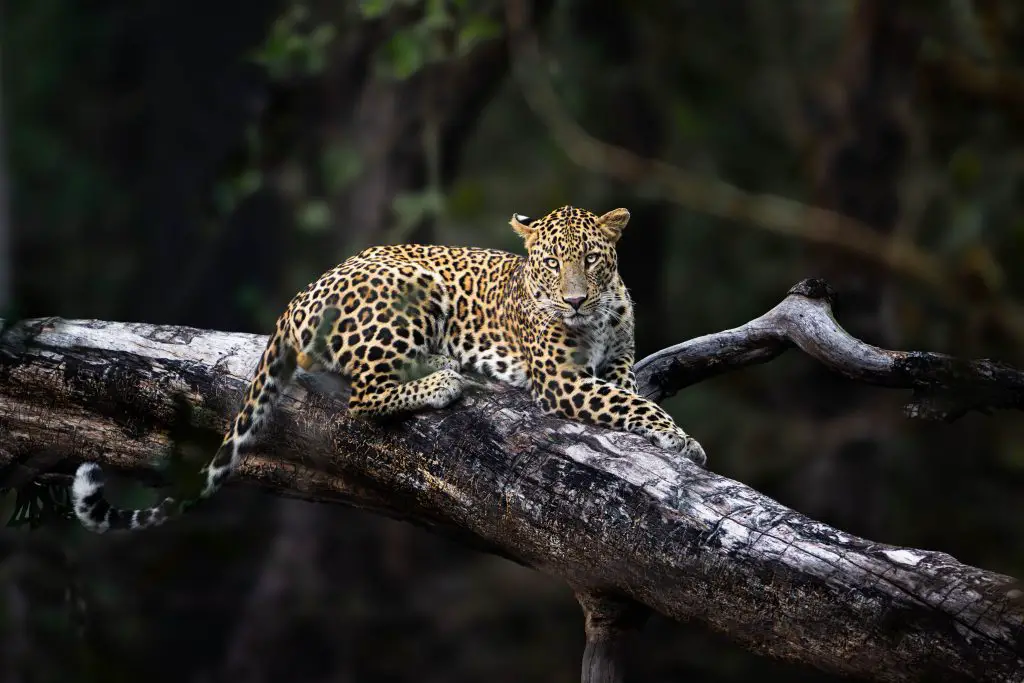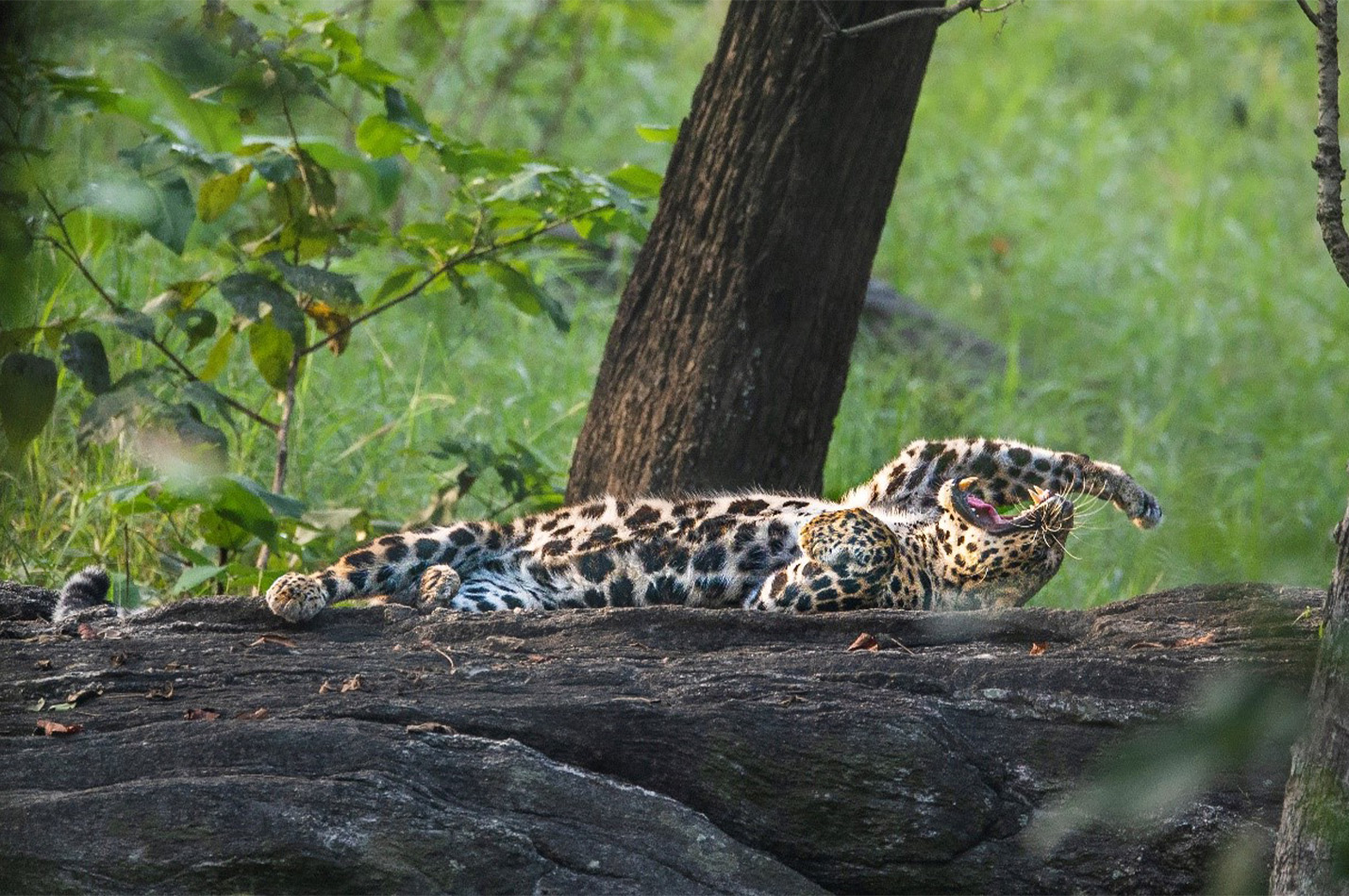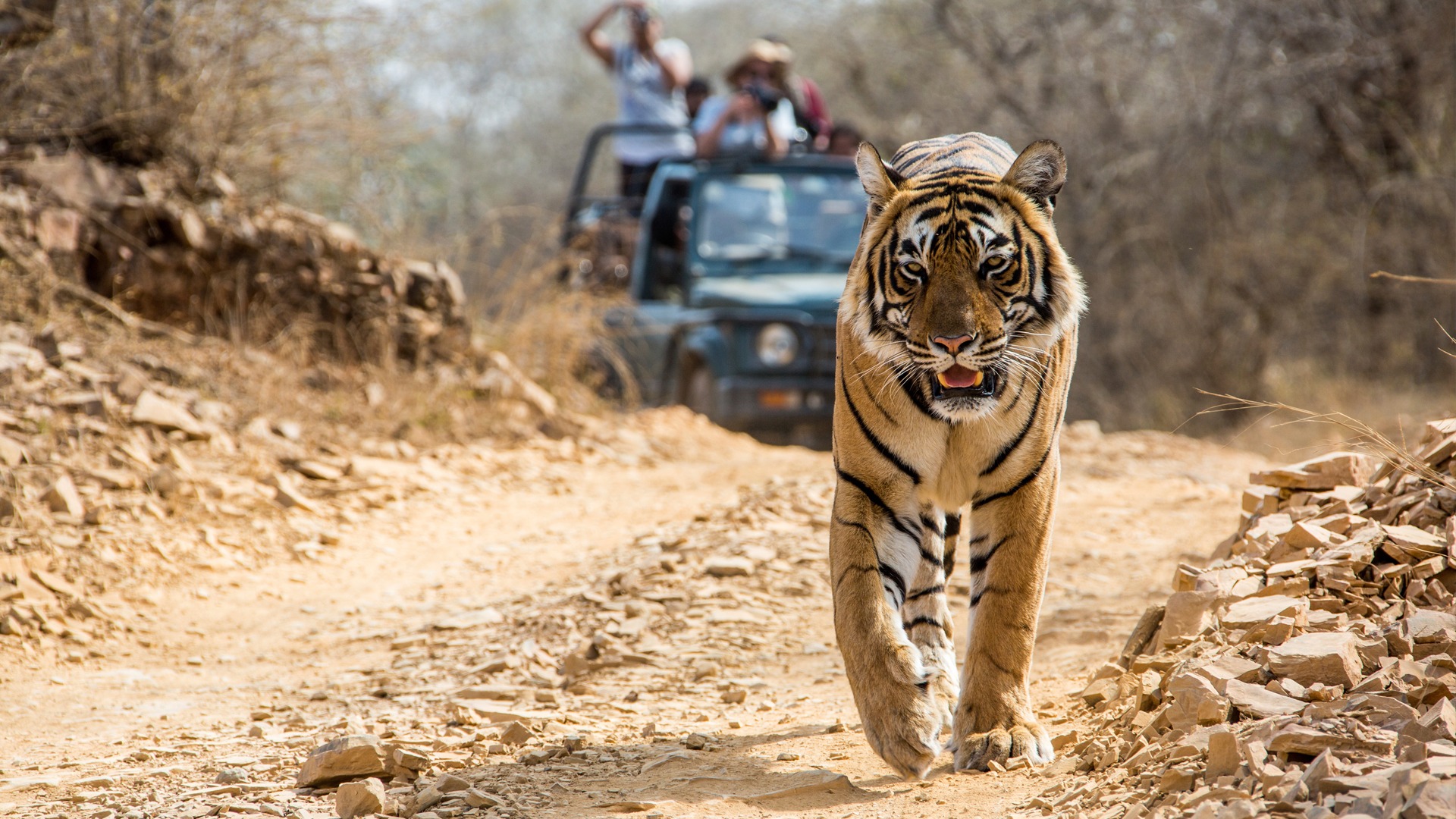India is a land of diverse ecosystems snow apped mountains, lush jungles, arid deserts, and coastal wetlands all teeming with unique wildlife. While Ranthambore National Park often steals the limelight for its tiger sightings, there’s a whole world of lesser known yet equally thrilling national parks that offer more intimate, offbeat, and immersive safari experiences.
Whether you’re an avid wildlife photographer, a nature lover, or a family seeking an adventurous getaway, this expert curated guide to the best national parks in India reveals where to go, what to expect, and where to stay for the most memorable safaris.
Table of Contents
1. Bandhavgarh National Park – For Guaranteed Tiger Encounters
Location: Madhya Pradesh
Best time to visit: October to June (peak sightings in March–May)
Famous for: High density of Bengal tigers

Once the private hunting reserve of the Maharajas, Bandhavgarh is now one of India's most tiger-rich zones. Despite its relatively compact size—just 448 square kilometers—it boasts one of the highest densities of tigers in the world. This makes it an ideal destination for first-time safari-goers hoping to catch a glimpse of the elusive big cat.
Beyond tigers, Bandhavgarh is home to over 250 bird species, sloth bears, leopards, wild boars, striped hyenas, and langurs. Its varied terrain of grasslands, dense sal forests, and ancient ruins makes each safari ride a visually stunning experience.
Where to stay:
Taj Mahua Kothi – Just 20 minutes from the park’s entrance, this luxury jungle lodge features 12 charming kutiyas (jungle huts), private butler service, and candlelit dinners under the stars.
Travel Tip:
Book safaris in the Tala Zone for the best tiger sightings. It's the most picturesque and wildlife-rich part of the park.
2. Kanha National Park – The Jungle Book Come to Life
Location: Madhya Pradesh
Best time to visit: November to May
Famous for: Inspiration for Rudyard Kipling’s The Jungle Book

Kanha is one of India’s most iconic national parks and the inspiration behind the fabled tale of Mowgli. It spans nearly 940 square kilometers of bamboo groves, grassy meadows, and sal forests, making it not only one of the largest parks in India but also one of the most picturesque.
Kanha is the best place to spot the endangered barasingha (swamp deer), which was brought back from the brink of extinction here. Tigers, leopards, wild dogs, and jackals are commonly sighted, while the abundance of birds—over 300 species—adds another dimension for birding enthusiasts.
Where to stay:
Taj Banjaar Tola – Rustic yet ultra-luxurious, this eco-conscious lodge sits by the Banjaar River. The 18 tented suites feature handcrafted furniture, open-air baths, and decks with stunning jungle views.
Travel Tip:
Opt for morning safaris for higher chances of spotting tigers and to enjoy mist-laden meadows lit by golden sunlight—perfect for photography.
3. Pench National Park – For a Quiet, Authentic Jungle Experience
Location: Border of Madhya Pradesh and Maharashtra
Best time to visit: February to April
Famous for: The legendary tigress Collarwali and her record-breaking litters

Pench remains one of India's best-kept safari secrets. Named after the Pench River that flows through the park, it offers undisturbed wilderness and fewer crowds—ideal for those looking for a peaceful, immersive jungle experience.
Wildlife watchers may be lucky enough to encounter the famed tigress Collarwali, who gained national fame for birthing 26 cubs in the wild. Other species here include gaur (Indian bison), wild boars, nilgai, jackals, and a vibrant population of over 260 bird species.
Where to stay:
Pench Tree Lodge – Elevated treehouses provide sweeping views of the forest canopy. With luxurious furnishings, birdwatching decks, and eco-friendly amenities, this lodge blends comfort and nature.
Travel Tip:
Visit during March–April for tiger sightings and to avoid summer heat. Combine your trip with nearby Kanha for a longer wildlife trail.
4. Tadoba Andhari Tiger Reserve – A Year-Round Tiger Hotspot
Location: Maharashtra
Best time to visit: February to May (Open all year except Tuesdays)
Famous for: One of India’s highest tiger populations in a relatively compact space

Tadoba is a fast-rising star among India’s tiger reserves. It’s Maharashtra’s oldest and largest national park, covering 625 square kilometers of teak and bamboo forests, meadows, and lakes.
What sets Tadoba apart is its relatively high tiger density and year-round accessibility—even during the monsoon season. The park is also home to leopards, wild dogs (dholes), sloth bears, marsh crocodiles, and a rich birdlife population.
Where to stay:
Svasara Jungle Lodge – Family-run and located just 300 meters from the Kolara Gate, this eco-lodge offers 12 modern suites, a cozy library, and nightly wildlife documentary screenings under the stars.
Travel Tip:
Safaris from Kolara and Moharli gates are the most productive. Book well in advance during the peak season (March–May).
5. Satpura National Park – For River Safaris and Leopard Spotting
Location: Madhya Pradesh
Best time to visit: October to April
Famous for: River safaris and offbeat terrain

If you're looking for a safari that's a little different, Satpura delivers. Unlike most Indian parks, it allows for walking safaris, canoe rides, and boat safaris, offering varied perspectives of wildlife spotting. While tiger sightings are rare, leopards, sloth bears, and the Malabar giant squirrel are frequently seen.
The topography here is diverse—rocky hills, dense forests, ravines, and the Denwa River—creating a cinematic setting for adventurers seeking solitude and serenity in the wild.
Where to stay:
Reni Pani Jungle Lodge – A boutique retreat nestled within the Satpura forests, featuring 12 charming cottages and four luxury tents. With no Wi-Fi or television, it encourages true digital detox.
Travel Tip:
Combine jeep safaris with walking and river safaris to make the most of Satpura’s unique terrain and wildlife diversity.
Bonus Mentions: Other Noteworthy National Parks in India
Jim Corbett National Park (Uttarakhand)
India’s oldest national park and the first under Project Tiger, Corbett is nestled in the Himalayan foothills. It's renowned for its diverse landscapes and high bird diversity. Ideal for those combining wildlife with a trip to the hill stations.
Kaziranga National Park (Assam)
A UNESCO World Heritage Site, Kaziranga is home to the world’s largest population of one-horned rhinoceroses. Elephant-back safaris and river cruises make it a unique experience.
Sundarbans National Park (West Bengal)
A mangrove forest unlike any other, it’s famous for its swimming tigers and labyrinthine river channels. Boat safaris are your window into this mysterious, watery world.
Final Thoughts: Planning Your Indian Safari
Exploring the Best National Parks in India is more than just chasing big cats. It’s about waking up to the call of hornbills, watching a sloth bear amble across your path, and marveling at peacocks dancing in golden meadows.
🧳 What to Pack:
- Neutral-colored clothing (avoid bright colors)
- Binoculars and a DSLR camera with zoom lens
- Sunscreen, hat, and insect repellent
- Lightweight scarf and warm jacket for early morning drives
🚗 Getting Around:
Most parks are best accessed via domestic flights to nearby cities (e.g., Jabalpur for Bandhavgarh/Kanha, Nagpur for Pench/Tadoba), followed by a private transfer.
📅 Best Time for Safaris in India:
- October to February: Pleasant weather, great for birdwatching
- March to May: Hot but excellent for tiger sightings due to water scarcity
- June to September: Monsoon rains close most parks except Tadoba
Conclusion
From the tiger-laden trails of Bandhavgarh and Kanha to the tranquil river safaris of Satpura, India’s national parks offer a wildlife experience that’s as thrilling as it is diverse. Skip the touristy crowds and embrace the raw, unfiltered beauty of India's lesser-known reserves—you’ll find the magic of the wild is waiting in every rustle of the forest.
If you're planning your next wildlife vacation, this list of the Best National Parks in India is your passport to unforgettable adventures.


